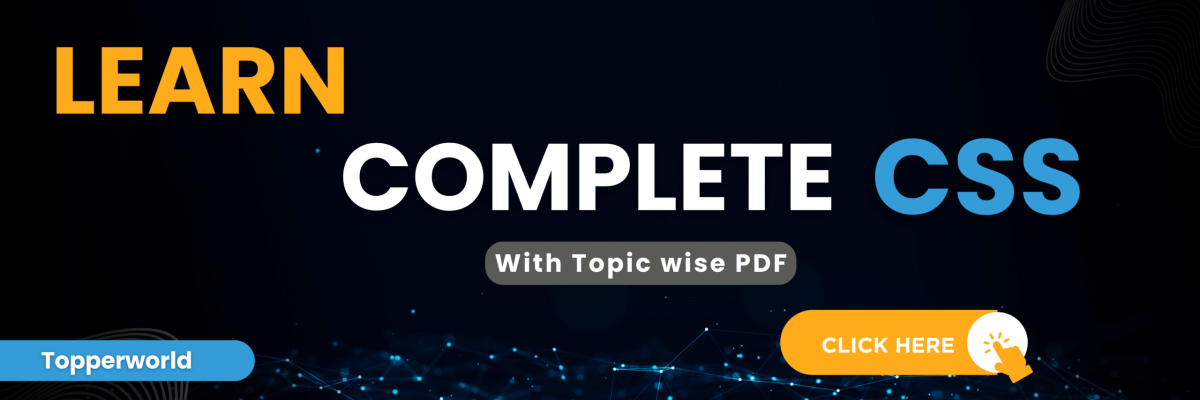CSS Website Layouts
CSS layouts determine the structure and positioning of HTML elements on a webpage. There are several approaches to creating layouts, each catering to specific design requirements.
In the below PDF we discuss about CSS Website Layouts in detail in simple language, Hope this will help in better understanding.
Common Types of Layouts:
1. Float-based Layouts:
- Traditional and widely used.
- Elements are floated left or right, allowing text and other elements to wrap around them.
- Requires careful clearing to prevent unexpected layout issues.
2. Flexbox Layout: - A one-dimensional layout model.
- Enables the distribution of space along a single axis.
- Simplifies the alignment and arrangement of items within containers.
3. Grid Layout: - A two-dimensional layout system.
- Allows precise placement of elements in rows and columns.
- Great for building complex and responsive designs.
Layouts Example:
We will create a 3-column layout, and change it to a 1-column layout on smaller screens:
/* Create three equal columns that float next to each other */
.column {
float: left;
width: 33.33%;
}
/* Clear floats after the columns */
.row:after {
content: "";
display: table;
clear: both;
}
/* Responsive layout - makes the three columns stack on top of each other instead of next to each other on smaller screens (600px wide or less) */
@media screen and (max-width: 600px) {
.column {
width: 100%;
}
}
CSS Frameworks for development:
To streamline the website development process, many developers leverage CSS frameworks such as Bootstrap or Tailwind CSS. These frameworks provide pre-designed components and utility classes that make it quicker and easier to create consistent and visually appealing layouts. While using frameworks can save time, understanding the underlying CSS principles remains essential.
Related Question
CSS, or Cascading Style Sheets, is a style sheet language used for describing the presentation of a document written in HTML or XML. It controls the layout, colors, fonts, and other visual aspects of a web page.
CSS is crucial in website development as it separates the structure and content (HTML) from the presentation and styling. It allows developers to control the appearance of web pages across different devices and screen sizes.
The box model in CSS describes the structure of an HTML element. It consists of content, padding, border, and margin. Understanding the box model is essential for proper layout design.
Responsive web design is an approach that makes web pages render well on a variety of devices and window or screen sizes. It uses a combination of flexible grids, layouts, images, and CSS media queries.
You can hide an element using the display property.
Relevant
The Ultimate Guide to CSS
A Complete Guide to CSS
A Complete Guide to CSS
The Ultimate Guide to CSS
CSS Background WhatsApp Group Join
The Ultimate Guide to CSS
CSS Units – Explained with



